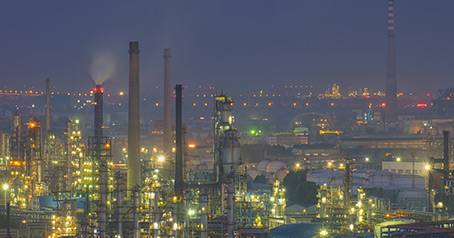Suppliers of High-Quality Indigo Dyed Cotton Fabrics for Fashion and Textiles
The Charm of Indigo Dyed Cotton Fabric A Timeless Choice in Textiles
Indigo dyed cotton fabric has captured the hearts of artisans, designers, and consumers alike. Known for its stunning deep blue hues and rich historical significance, this fabric is not only visually appealing but also environmentally friendly. As a leading supplier of indigo dyed cotton fabric, we believe it’s essential to explore the fascinating journey of indigo dyeing and the myriad benefits of this incredible material.
The History of Indigo Dye
Indigo dye, derived from the leaves of the indigo plant, has been used for thousands of years across various cultures. Its origins trace back to ancient civilizations in Egypt, India, and China, where indigo was prized for its brilliant color and the complexity of its dyeing process. Remarkably, the techniques have been passed down through generations, often involving intricate hand-dyeing methods that bring a unique charm to each piece of fabric.
The Dyeing Process
The process of creating indigo dyed cotton fabric is both an art and a science. First, the indigo leaves are harvested and fermented in a vat, where they develop a deep, rich color. This dye is then used to soak the cotton fabric. One of the most fascinating aspects of indigo dyeing is that the initial color is often greenish when the fabric is first removed from the dye vat. Upon exposure to oxygen, the fabric gradually transforms into the vibrant blue we associate with indigo.
Each layer of dye adds depth and character, allowing artisans to create a range of shades from indigo blue to softer pastels. The variations in color, coupled with unique patterns that often emerge from the dyeing process, make every indigo dyed cotton piece distinct. This individuality enhances its appeal in a world increasingly drawn to personalization and authenticity.
Applications of Indigo Dyed Cotton Fabric
indigo dyed cotton fabric supplier

Indigo dyed cotton fabric serves a multitude of purposes. In fashion, it has become a staple for denim brands and clothing designers looking to incorporate sustainable practices. The natural dyes and organic cotton create garments that are not only stylish but also environmentally conscious. From dresses and shirts to accessories like scarves and bags, indigo fabric adds a timeless quality to modern fashion.
In home decor, indigo fabrics are increasingly popular for upholstery, curtains, and bedding. The deep tones complement various interior styles, from rustic to contemporary, and provide a calming effect that resonates with many homeowners. Furthermore, indigo dyed cotton is widely used in traditional textile arts, including quilting, patchwork, and wall hangings, reflecting its versatility and lasting appeal.
Sustainable Practices and Ethical Sourcing
As environmental concerns grow, the demand for sustainably sourced materials continues to rise. Indigo dyed cotton fabric offers an eco-friendly alternative to synthetic dyes, which can be harmful to both health and the environment. Many suppliers, including ourselves, are committed to ethical sourcing practices that prioritize organic farming methods and fair labor standards.
By choosing indigo dyed cotton fabric, consumers support sustainable agriculture and responsible production processes. The use of natural dyes also minimizes water pollution, making it a conscientious choice for eco-aware consumers.
Conclusion
In summary, indigo dyed cotton fabric is not just a beautiful textile; it is a rich tapestry of history, artistry, and sustainability. As a leading supplier, we take pride in providing high-quality indigo fabrics that celebrate traditional dyeing methods while promoting ethical practices. Whether you're a designer looking for unique materials or a consumer who appreciates the aesthetics and ethical implications of your purchases, indigo dyed cotton fabric offers an exceptional choice that stands the test of time.
Explore the endless possibilities that indigo dyed cotton fabric can bring to your life, and join us in honoring the tradition that has adorned our world for centuries. With its breathtaking beauty and myriad applications, indigo dyed cotton will undoubtedly remain a cherished fabric for generations to come.
-
The Timeless Art of Denim Indigo Dye
NewsJul.01,2025
-
The Rise of Sulfur Dyed Denim
NewsJul.01,2025
-
The Rich Revival of the Best Indigo Dye
NewsJul.01,2025
-
The Enduring Strength of Sulphur Black
NewsJul.01,2025
-
The Ancient Art of Chinese Indigo Dye
NewsJul.01,2025
-
Industry Power of Indigo
NewsJul.01,2025
-
Black Sulfur is Leading the Next Wave
NewsJul.01,2025

Sulphur Black
1.Name: sulphur black; Sulfur Black; Sulphur Black 1;
2.Structure formula:
3.Molecule formula: C6H4N2O5
4.CAS No.: 1326-82-5
5.HS code: 32041911
6.Product specification:Appearance:black phosphorus flakes; black liquid

Bromo Indigo; Vat Bromo-Indigo; C.I.Vat Blue 5
1.Name: Bromo indigo; Vat bromo-indigo; C.I.Vat blue 5;
2.Structure formula:
3.Molecule formula: C16H6Br4N2O2
4.CAS No.: 2475-31-2
5.HS code: 3204151000 6.Major usage and instruction: Be mainly used to dye cotton fabrics.

Indigo Blue Vat Blue
1.Name: indigo blue,vat blue 1,
2.Structure formula:
3.Molecule formula: C16H10N2O2
4.. CAS No.: 482-89-3
5.Molecule weight: 262.62
6.HS code: 3204151000
7.Major usage and instruction: Be mainly used to dye cotton fabrics.

